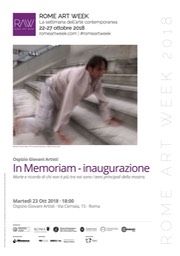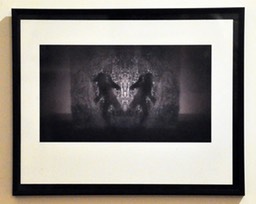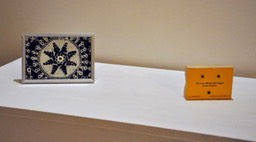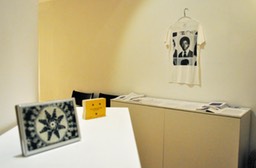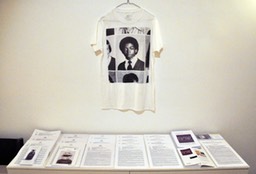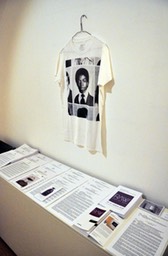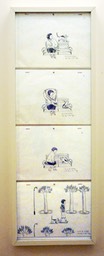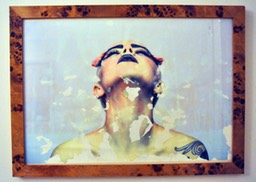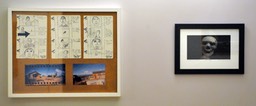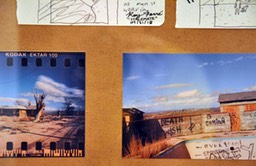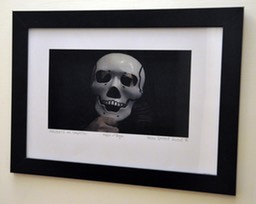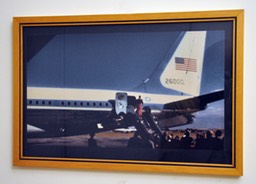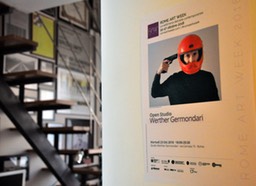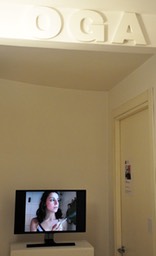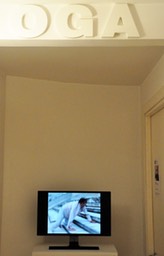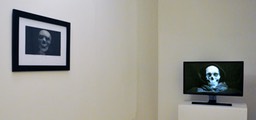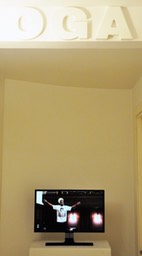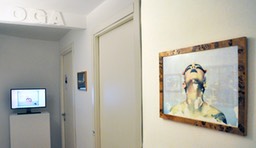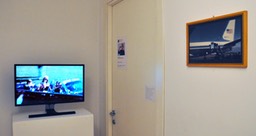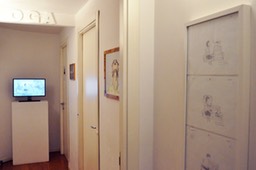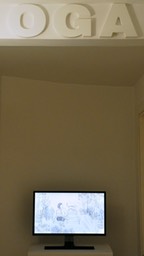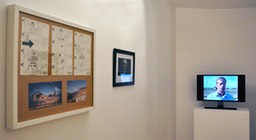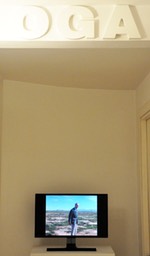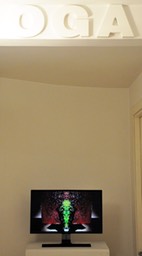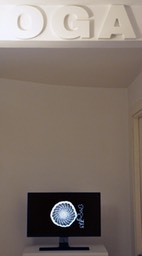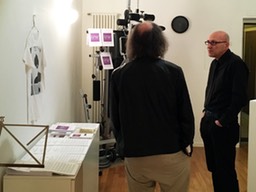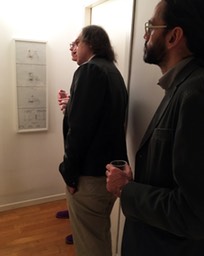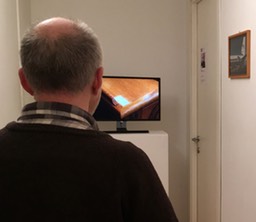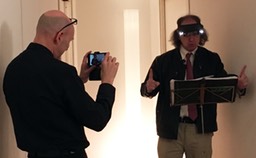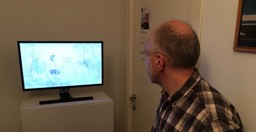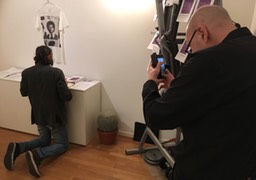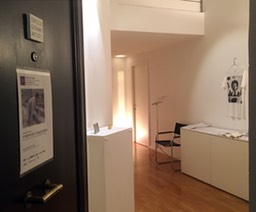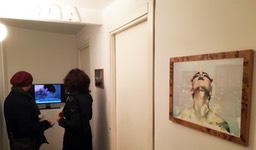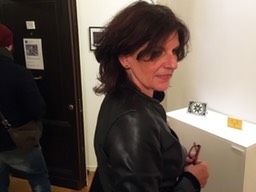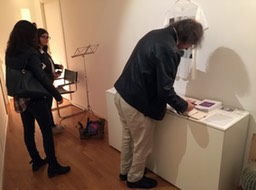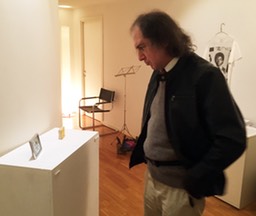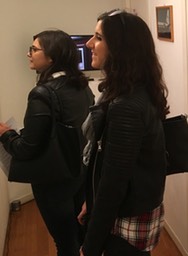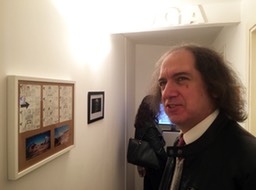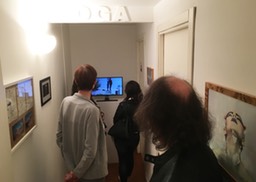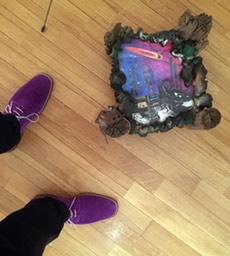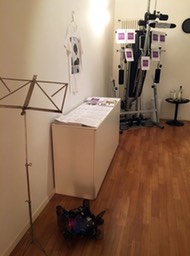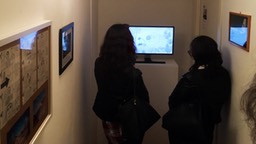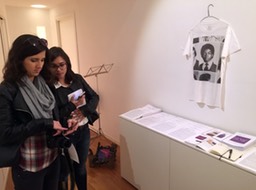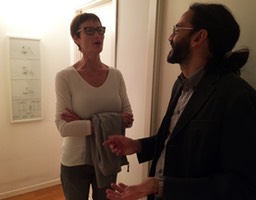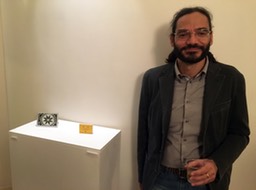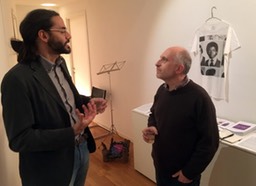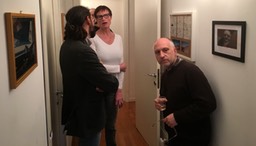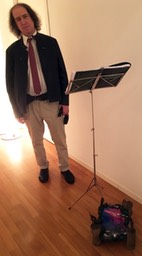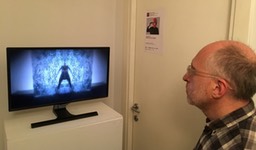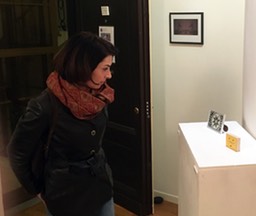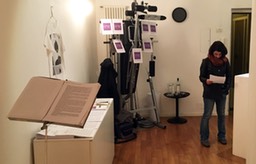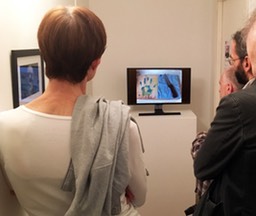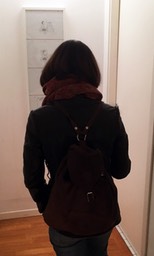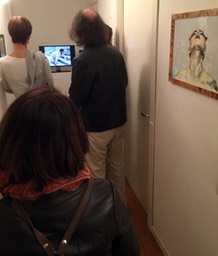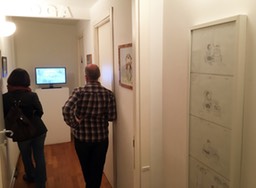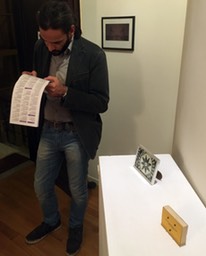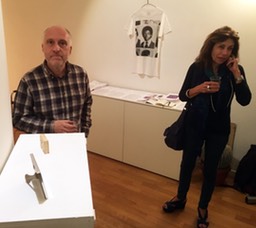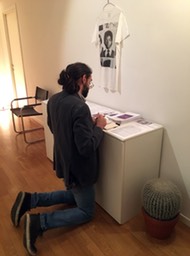Artists: Neno Belchev, Laís Catalano Aranha, Roy Ferré, Werther Germondari, John Graham, Julian Harper, Nari Hong, Vincenzo Monticelli Cuggiò, Mauricio Sanhueza, il7-Marco Settembre, Milan Zulic.
The death and the memory of those who are no longer among us are the main themes of this exhibition. The loss of someone or a past that is dear to us is treated with very different means and intentions, and with very poetic approaches. But, among the works of the twelve artists present, to dissolve the funereal climate, we also find surreal, political and desecrating works. All as always coming from the OGA Collection.
Neno Belchev (Varna, Bulgaria, 1971). Graduated from the National Academy of Art in Sofia, Bulgaria. Belchev works as video artist and filmmaker as well as in the fields of performance, installation, sculpture, new media and independent curator. Neno has participated in a wide range of solo and group, national and international exhibitions. His task as an artist is to look through the cover of things in their real essence. To provoke the people to see how of front of their own eyes their own world is changing. He uses very often humour, beside that in the other hand I take my art very seriously.
Laís Catalano Aranha (Sao Paolo, Brazil, 1986) is an emerging artist working primarily on lens-based mediums such as photography, video and multimedia art. Her mains research is directed to the exchange of artistic languages and how they can influence one another to create interdisciplinary works. Dance, music and performance have great influence on her creative process. The work in the exhibition, 'this side up', is a research on fragility and its impact as a driving force of human life, from research, personal experiences and the text of Jean Claude Carriere.
Roy Ferré (Calver City, USA, 1983) is an american filmmaker. In ‘Stalemate’, the work in the exhibition, a man finds himself in a strange run down house in the middle of the desert. He heads out to find answers to where he is. But the answer to his question is not what he was expecting. After waking up in an abandoned house, a man wanders through the surrounding desert and realizes that he may be stuck in purgatory. Co star in the shortfilm is the actor Winston De Lugo, who was Captain Timothy in the television series 'Star Trek', for many years.
Werther Germondari (Rimini, Italy, 1963) Visual artist, performer and filmmaker. Interested in innovative experimental dynamics that are neo-conceptual and situational, characterized by a taste for the ironic and surreal, Germondari has experimented for 35 years through many different expressive media (from painting to installations, photography to film, videos to live performance). Germondari's works have also been shown in solo exhibitions where he focuses on hidden elements highlighted in styles. In 2013 he founded the Ospizio Giovani Artisti.
John Graham (Saskatoon, Canada, 1946) is a multidisciplinary artist. John started his professional creative life by studying architecture and working as an architect. He later shifted his artistic focus to study and create visual art in multiple media. His ever-diversifying art practice includes print media, artist’s books, drawing, painting, installations, and independent filmmaking. His artwork has been acquired by numerable public and private art collections, like the Art Gallery of Ontario, the Canada Council Art Bank, the National Bank of Canada and the New York Public Library. And his films are in many collections, like the National Film Board of Canada.
Julian Harper (Indianapolis, USA, 1994) Group exhibitions (selection, 2018), all in Provo, Utah, USA, where he lives and works: “Art-ificial Lemonade Stand”, Provo Art Stroll; BYU Annual Student Show, Gallery 303; Annual Mayhew Show, BF Larsen Gallery; The Box Show, Provo City Library and Anderson Art Gallery; B66 Show, BF Larsen Gallery; Immigration/Imagination video fest and exhibition, VCFA and Pitzer College –curated by Việt Lê and Luis Jacob. ‘Flying to Tony’, the work in the exhibition, wants to be ‘a reverent glimpse into memory, memorial, and mourning’.
Nari Hong (Seoul, Korea, 1984) worked as a graphic designer in Seoul before falling in love with the process of making art by hand. When she studied design in London, she started to draw her inside story. She is now not only a graphic designer, but also an illustrator, printmaker, and author of children's book. And as her first animation is released in 2018, she became a filmmaker as well. Her first book, Don't be sorry, Dad! (Days with Dad) has been published in USA, Korea, Singapore, and Germany. Now she is working on a picture book with the film.
Mauricio Sanhueza (Lima, Peru,1978) studied at the University of Lima from 1996 until 2000. He then continued his studies at the Lima visual arts school, graduating in 2006 with top honors. Since 2004 he has participated in several collective art exhibits and festivals in Peru and abroad. Mauricio's videos have been screened at many international video-art and experimental short-film festivals and have won many awards. This work, in a sarcastic way, makes the audience thought how Hollywood has transformed reality in such a way that a national tragedy as the president’s assassination becomes mere entertainment when come through the mass media and advertising.
Vincenzo Monticelli Cuggiò (Napoli, Italy, 1969) Debuts in 2006 in Galleria Gallerati with an intimate research in abstract style; he then directs his own conceptual path to the urban context interpreted in an objective key. Since 2010 he has made exclusively unique pieces, without any proof of author, conceived as non-replicable creatures exposed to the irreversibility of real dynamics. In Galleria Gallerati he was sworn and reviewer for some competitions. Since 2013 he has also been a stage photographer and documents installations and performative events.
Milan Zulic (Sombor, Serbia, 1972). Award winning multimedia artist, he showed his paintings, sculptures, photography, video and extended media since 1992 on 32 solo exhibitions and more then 200 international art collectives. “Circle of life is my old grandma’s lace which I did unlaced, part by part, and each part of the lace scanned to make them, digitally in a moving line and make from it a new lace, but with a new technology. This is a story of my contact with my ancestors, and the circle of life of each of us”. (M.Z.)
--------------------------------------------------
Neno Belchev (Varna, Bulgaria, 1971). Diplomato alla National Academy of Art di Sofia, in Bulgaria, Belchev lavora come videoartista e regista, ma anche con la performance, l’installazione, la scultura, i nuovi media ed è curatore indipendente. Ha partecipato a moltissime mostre collettive internazionali. Il suo approccio è sempre quello di cercare di guardare oltre la superficie delle cose, nella loro vera essenza, anche attraverso la provocazione, riflettendo su come il mondo sta cambiando sotto i nostri occhi. Usa molto spesso l'umorismo, ma prende molto sul serio la sua arte.
Laís Catalano Aranha (Sao Paolo, Brasile, 1986) è un artista emergente che lavora principalmente con la fotografia, il video e l'arte multimediale. La sua ricerca principale è diretta allo scambio di linguaggi artistici e come possono influenzarsi a vicenda per creare opere interdisciplinari. La danza, la musica e le performance hanno una grande influenza sul suo processo creativo. Il lavoro in mostra, "this side up", è una ricerca sulla fragilità e il suo impatto come forza trainante della vita umana, dalla ricerca alle esperienze personali.
Roy Ferré (Calver City, USA, 1983) è un regista americano. In "Stalemate", il lavoro nella mostra, un uomo si ritrova in una strana casa in rovina nel mezzo del deserto. Si dirige fuori per trovare le risposte a dove si trova. Ma la risposta alla sua domanda non è quello che si aspettava. Dopo essersi svegliato in una casa abbandonata, un uomo vaga per il deserto circostante e si rende conto che potrebbe essere bloccato in purgatorio. Nel cortometraggio recita l’attore Winston De Lugo, che è stato per molti anni il Capitano Timothy nella serie televisiva ‘Star Trek’.
Werther Germondari (Rimini, 1963) Artista visivo, performer e filmmaker. Attento a dinamiche innovative sperimentali neo-concettuali che si caratterizzano per un gusto ironico e surreale, svolge dai primi anni ottanta una ricerca attraverso numerosi media espressivi. Ha partecipato a esposizioni in gallerie private e spazi sperimentali internazionali, alternando installazioni d’ambiente, videowork e atti performativi, focalizzando l’attenzione su elementi nascosti, attinenti a una visione reale, sociale e politica. Nel 2013 ha ideato l’Ospizio Giovani Artisti.
John Graham (Saskatoon, Canada, 1946) è un artista multidisciplinare. John ha iniziato la sua vita creativa professionale studiando architettura e lavorando come architetto. In seguito ha spostato la sua attenzione verso l’arte visiva. La sua pratica artistica comprende libri d'artista, disegno, pittura, installazioni e produzione cinematografica indipendente. Le sue opere sono state acquisite da numerose collezioni d'arte pubbliche e private, come la Galleria d'arte dell'Ontario, la Canada Council Art Bank, la National Bank of Canada e la New York Public Library. E i suoi film sono in molte collezioni, come il National Film Board of Canada e l’Ontario Art Council.
Julian Harper (Indianapolis, USA, 1994) Selezione di mostre collettive a cui ha partecipato nel 2018, tutte a Provo, nello Utah, USA, dove Harper vive e lavora: "Art-ificial Lemonade Stand", Provo Art Stroll; BYU Annual Student Show, Gallery 303; Annual Mayhew Show, BF Larsen Gallery; ‘The Box Show’, Provo City Library e Anderson Art Gallery; B66 Show, BF Larsen Gallery; Immigration/Imagination, VCFA e Pitzer College. 'Flying to Tony', il lavoro in mostra, vuole essere 'uno sguardo riverente su memoria, memoriale e lutto'.
Nari Hong (Seoul, Corea, 1984) ha lavorato come graphic designer a Seoul prima di innamorarsi del processo di creazione artistica con il disegno manuale. Ha iniziato a disegnare la storia del lavoro in mostra quando studiava design a Londra. Lavora come grafica, illustratrice ed autrice di libri per bambini. La sua prima animazione anche come regista/autrice è del 2018. Il suo primo libro, ‘Don't be sorry, Dad! (Days with Dad)’ è stato pubblicato negli Stati Uniti, in Corea, a Singapore e in Germania. Ora sta lavorando ad un nuovo libro illustrato+film.
Vincenzo Monticelli Cuggiò (Napoli, 1969) Artista fotografo, esordisce nel 2006 nella Galleria Gallerati con una ricerca intimista in stile astratto; in seguito indirizza il proprio percorso concettuale al contesto urbano interpretato in chiave oggettiva. Dal 2010 realizza esclusivamente pezzi unici, senza prova d’autore, concepiti come creature non replicabili esposte all’irreversibilità delle dinamiche reali. Nella Galleria Gallerati è stato giurato e recensore per alcuni concorsi. Dal 2013 è anche fotografo di scena e documenta installazioni ed eventi performativi.
Mauricio Sanhueza (Lima, Perù, 1978) ha studiato all'Università di Lima dal 1996 al 2000. Ha poi continuato i suoi studi presso la scuola di arti visive di Lima. Dal 2004 ha partecipato a numerose mostre d'arte collettive e festival internazionali. I video di Mauricio sono stati proiettati in molti festival internazionali di video arte e cortometraggi sperimentali e hanno vinto molti premi. Questo lavoro, in modo sarcastico, fa riflettere il pubblico su come Hollywood abbia trasformato la realtà in modo tale che una tragedia nazionale come l'assassinio del presidente diventi mero intrattenimento quando viene trasmesso attraverso i mass media e la pubblicità.
Milan Zulic (Sombor, Serbia, 1972). Pluripremiato artista multimediale, ha esposto i suoi dipinti, sculture, fotografia, video e media estesi dal 1992 in 32 mostre personali e più di 200 collettive internazionali. "Circle of life protagonista è il vecchio merletto della nonna che ho sfilato, parte dopo parte. Ho poi scannerizzato digitalmente ogni parte del merletto per arrivare ad una linea mobile e ricavare infine un nuovo pizzo, ma realizzato stavolta con una nuova tecnologia. È una storia sul contatto con i miei antenati, ma anche forse anche il cerchio della vita di ognuno di noi ". (M.Z.)
